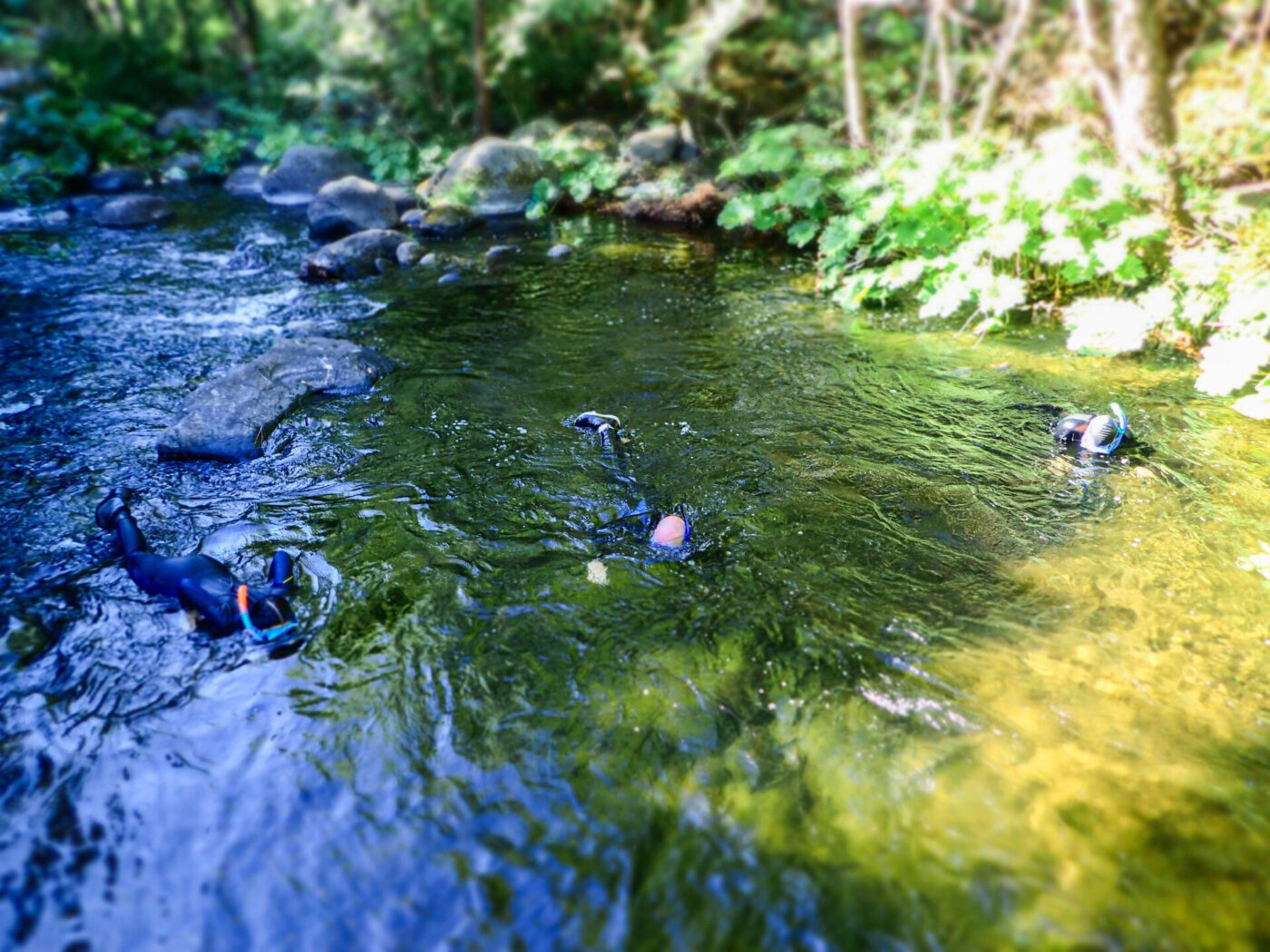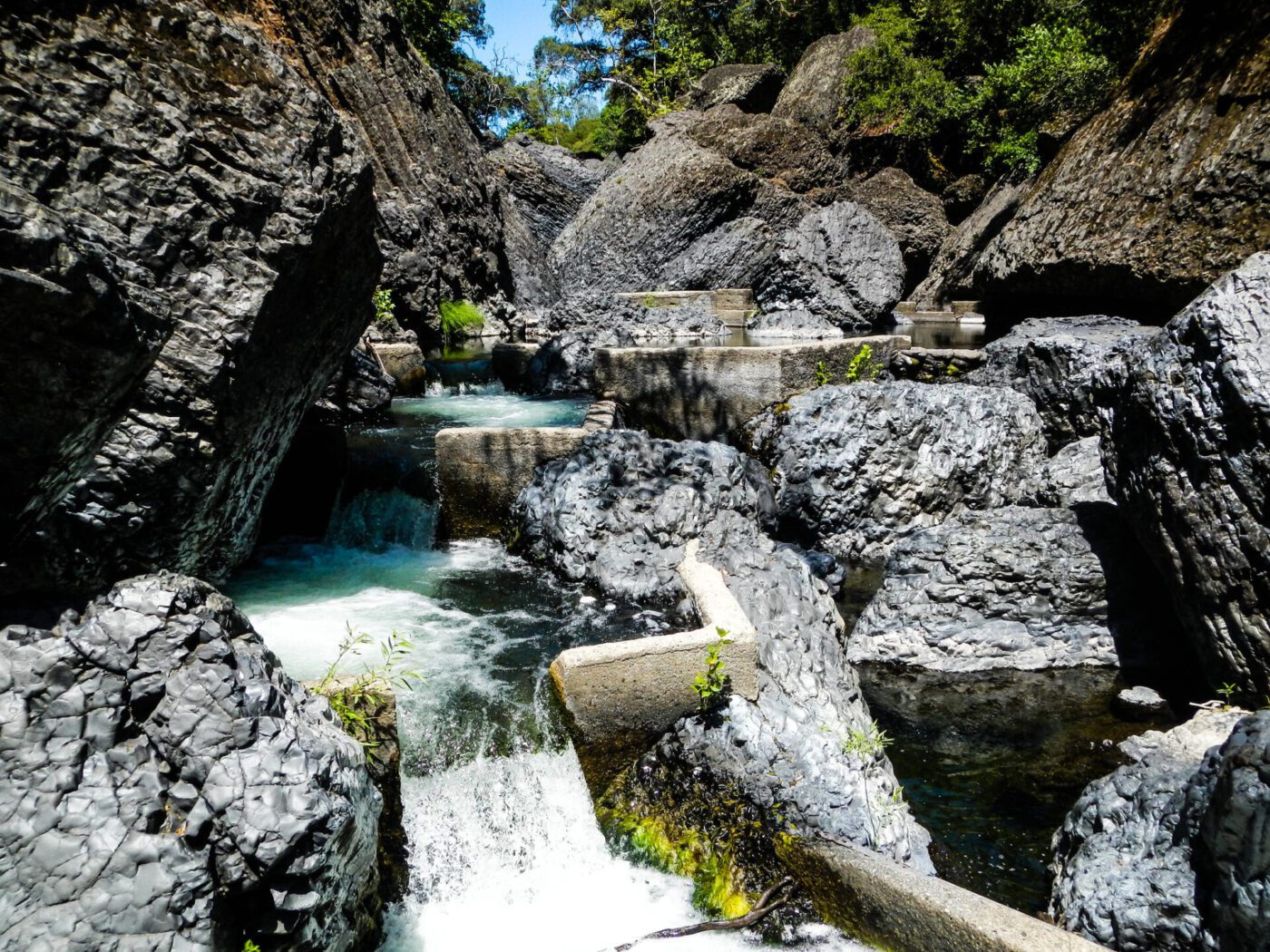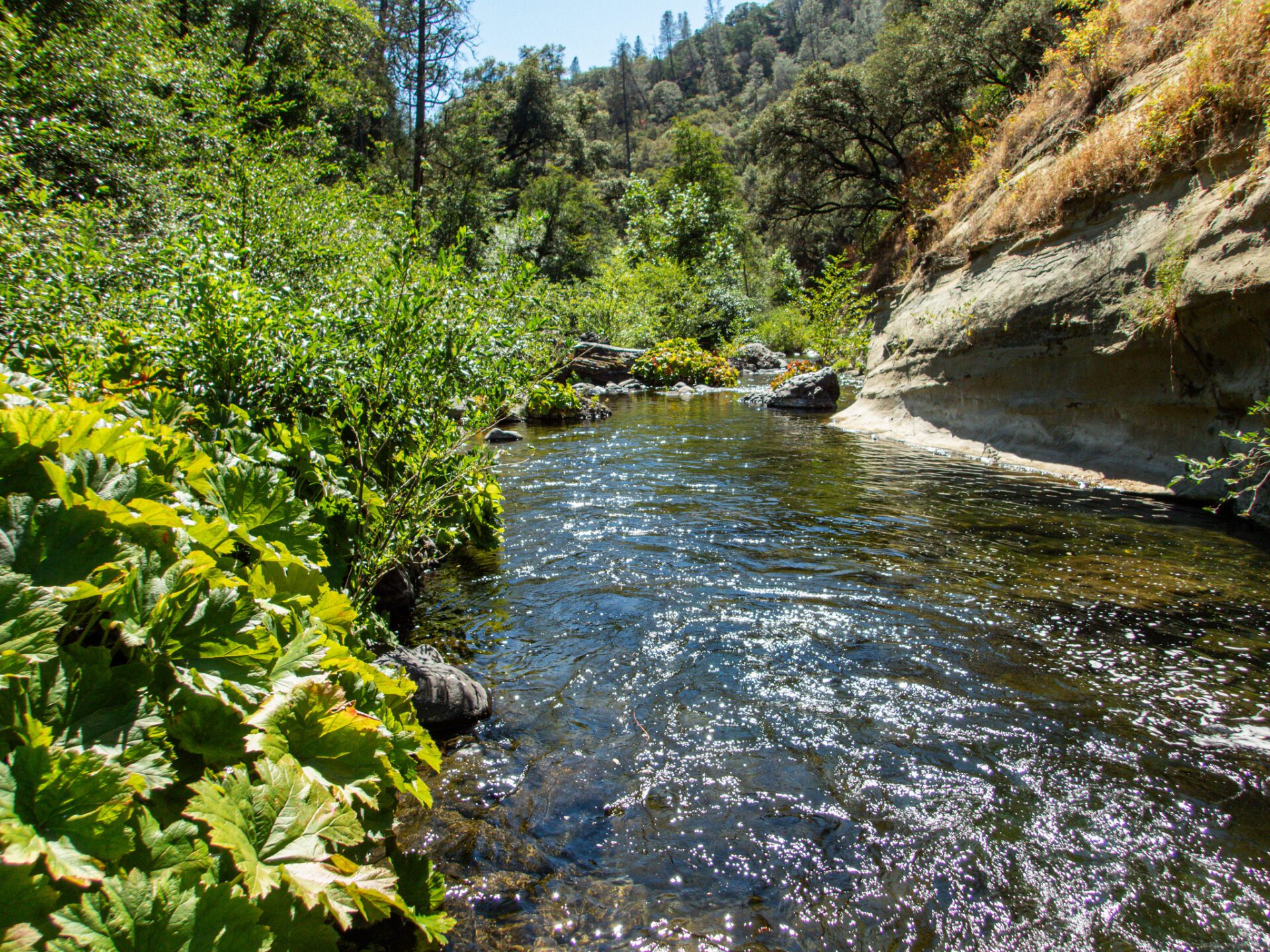Monday February 5, 2024

During the past summer, FISHBIO continued a tradition that began in 2013 by partnering with the Big Chico Creek Ecological Reserve (BCCER) to conduct snorkel surveys along a stretch of Big Chico Creek. Big Chico Creek flows into the Sacramento River near Chico and is one of few tributaries of this river that remains largely unaltered by human development. This creek provides important habitat for threatened anadromous fishes like spring-run Chinook salmon (Oncorhynchus tshawytscha) and steelhead (the ocean-going form of O. mykiss), which migrate to sea to grow to maturity but return to the freshwaters of Big Chico Creek to spawn. In addition to these charismatic salmonids, Big Chico Creek is home to several other non-game species of native fishes, including California roach (Hesperoleucus symmetricus), Sacramento sucker (Catostomus occidentalis), pikeminnow (Ptychocheilus grandis), riffle sculpin (Cottus gulosus), hardhead (Mylopharadon conocephalus), and Pacific lamprey (Entosphenus tridentatus).

The fish ladder on Big Chico Creek.
Management decisions, climate change, and other factors changed the abundance and distribution of fishes throughout the creek. A rockslide in the early 1900s (perhaps a result of the Great San Francisco Earthquake in 1906) created a natural barrier to anadromous fishes in a section of the creek referred to as Iron Canyon. This barrier prevented access to the cooler waters in the upper creek that provide suitable salmonid spawning habitat and a necessary reprieve from downstream waters, which become stressfully warm in the summer. In efforts to reconnect the reaches above and below Iron Canyon, a fish ladder was constructed in 1958. However, this fish ladder has become damaged and fallen into disrepair, and today does not reliably provide passage for fish attempting to move upstream through the canyon. Disruption to the creek’s native fish population was further compounded by a piscicide (fish poison) application in the creek in 1986 in hopes of improving sport fish populations in the area. This treatment resulted in the extirpation of many non-game species from the upper reaches of the creek. Nonnative, predatory black bass (Micropterus species) have also made their way into the creek, becoming fixtures in lower, warmer sections. Over the last few decades, management practices have evolved significantly and now focus more on maintaining biodiversity and native species conservation rather than prioritizing game fisheries. This shift in focus to conserving and restoring natural fish communities means that biodiversity monitoring in the creek is more important now than ever.

Healthy habitat on Big Chico Creek.
While various plans to restore anadromous fish passage through Iron Canyon have existed for quite some time, improving conditions for salmon and other native fish are finally on the horizon, spearheaded by California Trout and funded by the National Oceanic and Atmospheric Administration Restoration Center. As part of this restoration project, remnants of the defunct fish ladder will be removed and parts of the rock fall will be reconfigured to resemble a natural channel. The resulting step pool sequence will be passable for anadromous fish at a variety of different flows, and it will be available for fish use within the next three years. Once the project is completed, 8.5 miles of currently inaccessible habitat will be accessible once again to fish downstream of the barrier. Success of this project has the potential to reintroduce native species that haven’t seen the upper reaches of the creek for decades and provide a critical place for Chinook salmon and steelhead holding, spawning, and rearing, which would be integral to their recovery.
FISHBIO biologist Matea Djokic discusses the 2023 snorkel surveys.
FISHBIO conducts annual snorkel surveys on Big Chico Creek to monitor trends in fish population abundance and distribution, which serve as an environmental baseline to evaluate the success of the Iron Canyon Fish Passage Project. After observing the lowest numbers of rainbow trout in 2022 since monitoring began in 2013, the 2023 estimates were encouraging – showing an over two-fold increase in estimated abundance of rainbow trout (from 522 to 1,277 fish). Additionally, surveys revealed that native species continue to be absent or rare above Iron Canyon except forrainbow trout, California roach, riffle sculpin, and Sacramento sucker. This suggests that Iron Canyon remains an impassable barrier to some species, hampering recovery of the native fish community nearly 40 years after the piscicide treatment. Although spring-run Chinook salmon are occasionally sighted in Big Chico Creek, most of them never make it beyond Iron Canyon under current conditions and eventually succumb to high temperatures in the lower reaches before being able to spawn in the fall. In 2023, close to a dozen Chinook salmon were observed holding in a pool below Iron Canyon, but no individuals were documented above Iron Canyon during snorkel surveys. Observations from the 2023 snorkel surveys were corroborated by the first collection of environmental DNA samples from Big Chico Creek. This technology has the ability to detect rare or cryptic fish species that are easily missed during visual observation surveys by sequencing DNA contained in water samples taken from the creek. Annual monitoring over the next several summers will document the response of the fish community to improved connectivity, with hopes that this cherished creek will again host a complete native fish community.
Header Image: Conducting a snorkel survey on Big Chico Creek.
This post was featured in our weekly e-newsletter, the Fish Report. You can subscribe to the Fish Report here.
